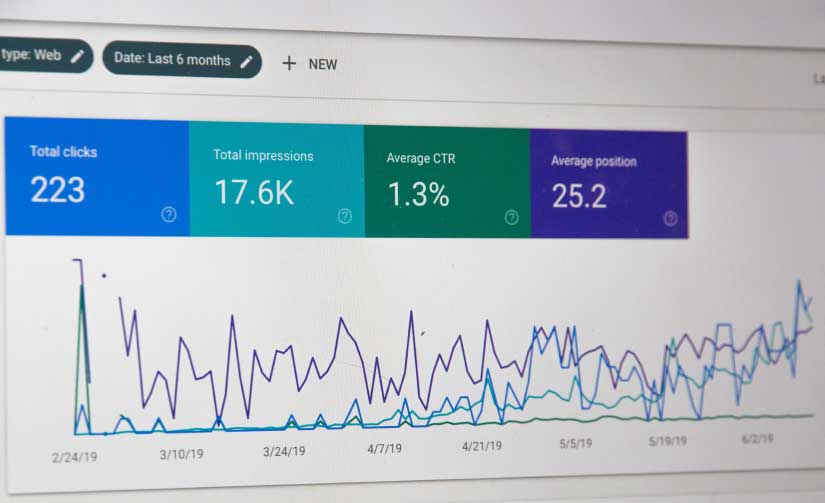The Marketers’ Guide to Web Development
The Marketers’ Guide to Web Development
Set up for success
A series of articles working as a basic checklist with no jargon which ensures your business has the tools and knowledge you need to get started, or revitalise a business and become equipped to grow.
What does web development have to do with marketing?
It’s likely you know all about touchpoints- every time a customer has an interaction with your brand. One of the first touchpoints a customer will have will be with your website, so it’s easy to understand why this initial interaction with your brand needs to leave a good impression.

A website should effectively communicate the ethos of your brand, in terms of the information available but also the design and usability of the site.
- If you are promoting luxury goods, your website needs to convey the same sense of luxury in terms of the design.
- If you’re a HR software management company, if your website isn’t easy to navigate and quick to respond, clients will assume the case is the same for your software.
- If you’re in a pharmaceutical industry and your website doesn’t convey trust in terms of its security, your clients won’t trust you either.

How do you know if you need a web developer?
Of course, if your website is showing up as ‘not secure’ to users, they may not trust their data will be kept safe on your site and are likely not to continue onto it. A web developer will be able to help with this by installing an SSL certificate (Secure Sockets Layer) to make your website show up as https instead of http (which Google will show as an unsecure site, and therefore reduce your organic search ranking).
There are a few handy things you can do to analyse your website if you want to know if you need a website developer, such as by looking at the technical performance of your site, including investigating search engine optimization (SEO) which will be delved into here.
Google analytics can show you the loading speed of your pages in the page timings report, which you can find by going to your view-> reports-> behaviour-> site speed. To understand where the issues may be, you can go onto this website: https://developers.google.com/speed/pagespeed/insights/ which will check the speed of your website based on several different metrics, and make suggestions on how to improve site performance.
The metrics Google evaluates are as follows:
- First Contentful Paint (FCP)
- Good 0-1800ms
- Needs improvement 1800-3000ms
- Poor 3000ms +
This measures the time it takes for the first bit of content to appear on the page, such as text or an image. Since this is the first thing your customers see, it’s useful to make sure it comes up as your logo or a loading screen. This means you have control over this touchpoint at the loading screen, something many marketers are unaware of.
- First Input Delay (FID)
- Good 0-100ms
- Needs improvement 100-300ms
- Poor 300ms +
The FID is the time it takes from someone interacting with something on your site, to the time it takes for the site to respond. This needs to be low so users can navigate your site with ease- after all, why put a roadblock in front of someone already interested in your brand?
- Largest Contentful Paint (LCP)
- Good 0-2500ms
- Needs improvement 2500-4000ms
- Poor 4000ms +
Similarly to the FCP, this has to do with the loading times of content on a page, though in this case it refers to the speed at which the largest piece of content has loaded.
- Cumulative Layout Shift (CLS)
- Good 0-0.1
- Needs improvement 0.1-0.25
- Poor 0.25 +
This measures the amount of unexpected layout shifts a site suffers from (e.g. an advertisement loading where you’re reading, causing an unwanted click). This can make a website difficult to use, and cause annoyance for the user. Unlike the previous metrics which were measured in milliseconds, this metric is measured by the amount of content which shifts, combined with how far it shifted.
What is search engine optimization (SEO)?
SEO is the process in which websites or other content pieces are optimised to work with Google’s algorithm, which analyses sites and decides which order they appear in. If you want to rank higher in search, SEO must be used.
The algorithm uses several different metrics to decide what shows up when you search, one of which is site speed- the algorithm works to prioritise the user experience and make sure what shows up is what the user will find useful and high quality- therefore Google won’t recommend a slow website to someone searching.

Other ways your site is analysed is with the keywords within. The keyword research itself is a marketer’s responsibility, however it’s possible to work with developers to insert meta tags.
Meta tags are inserts into the code of a website which prioritise which bits of a website show first and what is displayed under the title of your website which lets a user know a brief summary of your page. This also tells Google, or any other search engine, what type of website you have and makes sure you show up in relevant search results.
Though a content management system (CMS) like WordPress will make it easier to insert meta tags, custom built sites will need these manually placed in, however custom built sites provide further opportunities to use metadata to make your site easy for search engines to read across desktop and mobile.

How do you find a web developer?
This will depend on your needs. If you need small, but regular updates you may want to consider hiring a web developer. In this case, you would use a general hiring pathway. If you won’t need updates often, hiring a freelancer from a site such as UpWork is also an option.
To roll out a larger scale update such as a whole site cleanup of unused Javascript to make your website run faster, or an entire redesign, it would be beneficial to hire the services of a web development company, and they would have the experience and capabilities to roll out a large update without damaging the site structure and existing content. You can search for these companies with terms like ‘web developer near me’ or ‘full-service digital marketing agency’ (something like this will mean you are likely to get web development, web design and SEO and marketing services). Alternatively, ask people you know for their recommendations.
How much money should you spend on web development?
There is no hard and fast rule dictating how much web development should cost. There are many factors to consider, including personal website requirements. There are a few questions you ask yourself to understand both if you need web development, and how much you should spend.
Can I afford to run without it? Can you spread it out over a period of time? Does it fit neatly within your profit margin? Realistically this will be based on your needs.
For example,if you're a hairdresser the risk of a data breach won't matter as customer details likely won't be stored on your site. If you're a recruiter you don't have an option - if your site is running in a non-compliant way you will likely receive fines and clients will lose trust in you.
SEO quiz
Which three of the following will positively affect a website’s ranking? (Answers below the image)
- High site speed
- Colourful site design
- Accurately descriptive meta tags
- A high cost web redesign
- Cute puppy pictures
- A secure site

Answers: 1, 3 and 6 are the correct answers (Of course, there are more things which will affect your ranking such as the relevance of your keywords in your content, and how many good backlinks you have).
Incorrect answer number 2: Colourful web design may make your website look attractive, though it won’t affect SEO, and there are many other things which go into a good website design.
Incorrect answer number 4: A costly web redesign service may not positively contribute to a website’s ranking. Before deciding on any service, do your research. A high cost doesn’t always mean high quality!
Incorrect answer number 5: We would love it if puppy pics got a better website ranking! But unfortunately, that isn’t the case. Better stick to standard SEO practices!
Learn more about web development and starting a business with our other articles, and if you think this article could help anyone in your following, you can share it on your social media pages.
